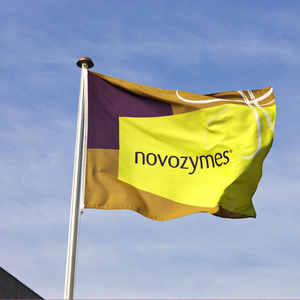Novozymes increases sales of enzymes to the bioenergy industry

April 24, 2014
BY Novozymes
Sales of enzymes to the bioenergy industry increase by 34 percent as customers embrace new technology.
Three enzymes that promise to improve profits for producers of corn ethanol are behind the strong growth in Novozymes’ first quarter bioenergy sales. Avantec, Spirizyme Achieve and Olexa enable producers to squeeze up to 5 percent more ethanol out of corn while saving on energy and chemicals.
“The enzymes give our customers a choice,” said Niels Miles Frandsen, marketing director for bioenergy at Novozymes, “They can look at corn and ethanol prices, and then decide to buy less corn, but still maintain the same ethanol output, or they can increase throughput without increasing input costs. They are achieving the yield benefits we promised.”
Advertisement
Avantec was introduced to the market in October 2012, while Spirizyme Achieve was launched in June 2013 along with Olexa, a solution that works by freeing up oil bound in the corn germ. In addition to increasing ethanol yield, the three enzymes can improve corn oil extraction by 13 percent, while saving 8 percent energy. This helps ethanol producers to improve profit margins and efficiency, and reduce their environmental footprint.
Novozymes’ tech service team has played a big part in getting the new products quickly introduced in the ethanol industry. Using data analysis and advanced statistics, the team works with customers at their plants to implement the technology and adjust their processes to ensure the enzyme benefits are fully realized.
“Our tech service team act as trusted advisors to our customers, and share the best practices they have developed for these products,” Frandsen said. “They help our customers see through the noise and track their yield increase. Our success in bioenergy is not just a result of the innovative enzymes we’re offering, but also due to this talented team who ensure our customers get an entire solution that meets their needs.”
The U.S. Energy Information Administration estimates that U.S. fuel ethanol production grew by 11 percent in the first quarter of 2014 compared with the same period last year. The U.S. remains the world’s biggest biofuels producer, and with ethanol accounting for approximately 10 percent of gasoline consumption in the U.S. today, the continuous development of such a renewable fuel aids the battle against climate change.
Advertisement
“The biofuel industry is continuing to develop and our journey to increase yields is not yet done,” says Niels Miles Frandsen, “We will continue to provide our customers with new technology that improves their business.”
Related Stories
EFT licensee Highbury Energy Inc. and WBCEC are advancing a CAD$210M Indigenous-led biomass-to-fuels project in Fort Frances, Ontario. The facility will use woody biomass to produce SAF and renewable diesel.
The U.S. EPA on Sept. 12 released a proposed rule to end the Greenhouse Gas Reporting Program. If finalized, the proposal would remove reporting obligations for most large facilities, all fuel and industrial gas suppliers, and CO2 injection sites.
The Coalition for Renewable Natural Gas and American Fuel & Petrochemical Manufacturers in September filed separate lawsuits challenging the U.S. EPA’s final rule to partially waive 2024 cellulosic blending obligations under the RFS.
Provectus Biofuels Inc. on Sept. 11 announced it has signed a non-binding letter of intent with a regional Alberta airport that sets out indicative terms under which both parties intend to negotiate a definitive long-term offtake agreement for SAF.
Worley has been awarded a contract by Preem for FEED verification for the planned conversion of the ICR plant at the Lysekil refinery in Sweden from conventional diesel production to the production of renewable diesel and SAF.
Upcoming Events










